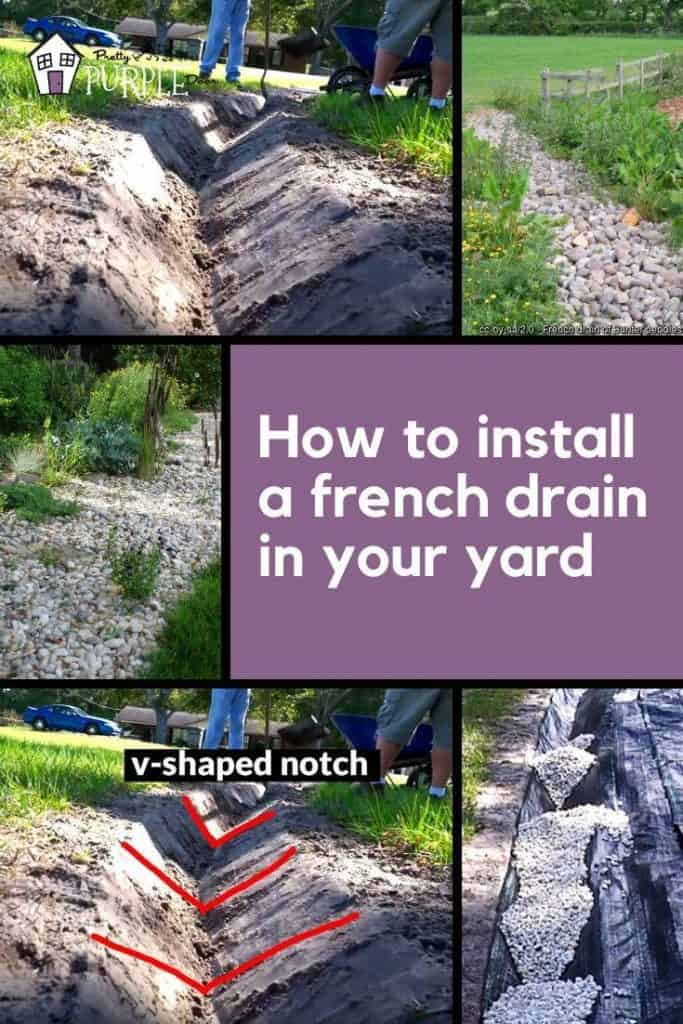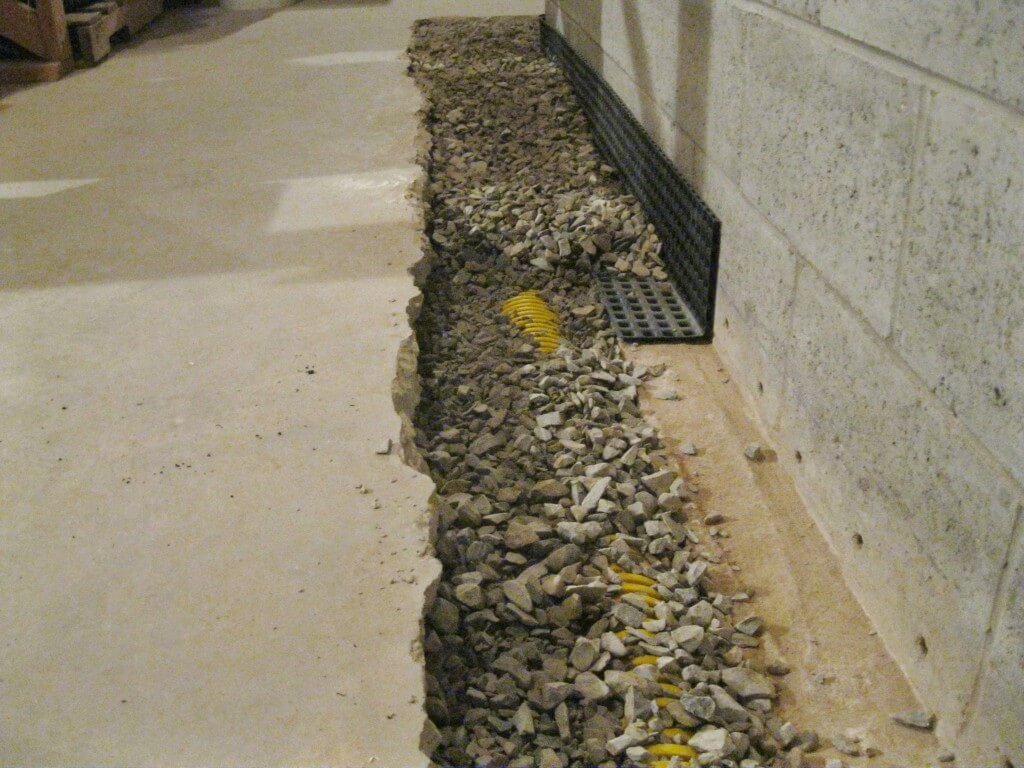Signs Your Yard Needs a Portland French Drain ASAP
Signs Your Yard Needs a Portland French Drain ASAP
Blog Article
The Vital Guide to Keeping Your French Drain for Durable Performance
Maintaining your French drainpipe is essential to its performance and your home's security. Regular checks can conserve you from expensive fixings and water damages. You'll would like to know what indicators to try to find and exactly how typically to inspect your system. Plus, comprehending the cleaning procedure can make a significant difference. Allow's check out the vital steps for guaranteeing your drainpipe functions well for years ahead.
Understanding the Feature of a French Drainpipe
A French drain is an essential part in handling water around your home. It guides excess water far from your foundation, preventing flooding and damages. When heavy rainfall drops, the drain accumulates water via a perforated pipeline hidden in crushed rock. This system allows water to move freely, minimizing pressure on your basement walls and reducing the risk of leaks.You might question how it functions in technique. As water saturates the soil, gravity draws it towards the drain. The perforated pipeline catches this water, carrying it to a marked water drainage area or tornado drain. This procedure maintains your backyard completely dry and shields your home's architectural integrity.Understanding just how a French drainpipe features is essential to appreciating its value. By properly directing water away, it helps preserve a safe and dry living atmosphere. Maintaining your French drainpipe in leading problem guarantees you prevent expensive repair services down the line.
Regular Inspections: What to Look For
When you're evaluating your French drain, beginning by examining for any clogs that could be obstructing water flow. Take note of indicators of surface area erosion around the drainpipe, as this can suggest possible problems. Regular analyses will assist keep your water drainage system working effectively.
Obstructed Drainpipe Analysis
Just how can you tell if your French drainpipe is clogged? Watch for water pooling in your lawn, particularly after hefty rain. That's a red flag if you see locations where water accumulates rather of draining pipes. You need to likewise inspect the drain electrical outlet; if water isn't spurting as it should, there's likely a blockage. Listen for unusual gurgling sounds, which can show trapped air. Furthermore, inspect the drain's surface area for any kind of plant life development, as roots can penetrate and obstruct the system. If you scent moldy odors, it might aim to stagnant water caused by an obstruction. On a regular basis evaluating these indications can aid you preserve your French drain successfully and avoid costly repair services.
Surface Disintegration Check

Cleaning Your French Drain: Step-by-Step Guide
Cleaning your French drainpipe is vital for maintaining it working correctly. You'll need some certain tools and a clear process to ensure everything runs efficiently. Allow's stroll through the actions and pointers for preserving your drainpipe efficiently.
Devices You'll Need
To deal with the task of cleaning your French drain effectively, you'll intend to collect a few crucial devices. Grab a sturdy set of handwear covers to protect your hands from particles and sharp items. A tiny shovel or trowel will certainly assist you remove dust or blockages around the drain. For cleaning out the interior, a plumbing professional's serpent or a high-pressure water nozzle can be unbelievably valuable. You'll also require a bucket for collecting any particles you take out. Having a garden tube on hand will make it simpler to rinse out the drain and guarantee it's streaming efficiently. With these tools all set, you'll be established for a comprehensive cleaning session!
Cleaning Process Actions
Beginning by assessing the area around your French drainpipe for any kind of visible debris or obstructions. Eliminate leaves, branches, or dust that might block water circulation. Next off, examine the inlet and outlet locations; clear any kind of obstructions to ensure proper drain. Use a garden hose pipe to purge the drain, directing water into the inlet. This aids remove any type of accumulated sludge or debris. If you discover persistent obstructions, consider making use of a plumbing technician's serpent to damage them up. After cleaning, check the crushed rock around the drain; renew it if it's gotten rid of. Lastly, verify the drainpipe covers are intact and firmly in location to stop debris from getting in. Regular cleansing keeps your French drain working efficiently.
Maintenance Regularity Tips
While regular maintenance is crucial for your French drainpipe's longevity, knowing just how commonly to maintain it can make all the difference. Preferably, you ought to evaluate your French drainpipe at the very least twice a year, ideally in springtime and autumn. After hefty rainfall or snowmelt, check for obstructions or particles. If you notice any kind of standing water, it's time to clean your drain.In locations with hefty vegetation, even more frequent maintenance-- about every 3 months-- may be essential. Furthermore, think about cleaning your French drain after major storms or if you observe water pooling in your yard. By remaining positive, you'll assure your French drainpipe functions properly and secures your building from water damage. Regular checks will save you money and time over time.
Recognizing Usual Issues and Their Solutions
When you observe water pooling in your lawn or damp areas in your cellar, it's important to determine usual concerns with your French drainpipe and implement effective services. One regular trouble is clogging, usually caused by debris like leaves or debris. To repair this, you can use a pipes serpent or a high-pressure water jet to clear blockages.Another problem could be incorrect incline. Water won't move away from your home if your drainpipe isn't sloped appropriately. You can readjust the slope by Discover More Here digging and repositioning the read this article drainpipe pipe.Lastly, look for damages or fractures in the drainpipe itself. Replacing the damaged sections is vital for peak performance if you discover any kind of. By addressing these issues without delay, you'll aid assure that your French drainpipe continues to operate properly, shielding your building from water damage and maintaining a completely dry, secure environment.
Seasonal Upkeep Tips for Your French Drainpipe
Addressing usual problems with your French drain is just the very first step in guaranteeing its lasting performance. Seasonal upkeep is vital for peak performance. In the springtime, clear away leaves and debris that may have built up during winter season. Look for any blockages in the outlet or capture container, as water requires a clear path to stream freely.During summer season, inspect your drainpipe for any type of signs of working out or moving soil. Make sure it's still level and functioning appropriately. As autumn approaches, clean any kind of fallen leaves to prevent clogs before winter season arrives.In winter season, expect freezing temperature levels. Make sure your drainpipe isn't at risk of freezing if you live in a chilly environment. Insulating subjected pipes can help. Normal checks and prompt maintenance can prevent expensive repairs and keep your French drain functioning efficiently year-round. Remain aggressive and enjoy assurance recognizing your drain system is in great shape!
When to Contact an Expert
When to call in a specialist can save you time and stop additional damages to your French drainpipe, knowing. It's a clear indication that your drainpipe might be clogged or damaged if you see consistent standing water in your yard. Don't ignore odd odors, as they can show sewer backup or decay, which calls for immediate attention.If you discover that your drain isn't functioning appropriately after attempts to tidy find here or maintain it, it's time to connect for specialist aid. In addition, if you're not sure concerning the underlying problems or do not have the needed devices, hiring an expert can give tranquility of mind.Finally, if your French drain is old or has experienced substantial wear and tear, professional assessment can figure out whether fixings or complete substitute is required. Trust the professionals to assure your water drainage system functions efficiently for several years ahead.
Tips for Protecting Against Future Drain Troubles
To keep your French drain working effectively, consistently examining and maintaining it can make all the difference. Begin by removing particles, leaves, and dirt from the surface and drainpipe openings. This stops blockages that can result in water back-up. Examine the gravel around the drain; if it's compressed or deteriorated, think about adding fresh gravel to keep perfect flow.Next, draw away water away from your drain by making sure downspouts and gutters are clear and directing water a minimum of 3 feet away from your foundation. Consistently inspect for any indicators of damage or sagging. If you see concerns, address them immediately.Finally, take into consideration mounting a catch or a filter basin to trap larger particles prior to it enters the drainpipe. By remaining aggressive with these tips, you'll reduce the danger of future drain problems and keep your French drainpipe in leading form.
Regularly Asked Inquiries
For how long Does a French Drainpipe Usually Last?
A French drain usually lasts around 30 to 40 years, depending on the materials used and upkeep (Portland French Drain). If you stay on par with normal checks, you can extend its lifespan even further
Can I Install a French Drain Myself?
Yes, you can install a French drainpipe on your own if you've obtained the right devices and expertise. Simply ensure to intend carefully, adhere to local regulations, and assurance proper drain to avoid future issues.
What Materials Are Used in a French Drain?
You'll need perforated pipeline, crushed rock, landscape fabric, and a strong drain pipeline for your French drainpipe. These products assist redirect water successfully, stopping flooding and maintaining your property dry and secure from water damage.

Is a Permit Required to Mount a French Drain?
You'll likely need an authorization to set up a French drainpipe, depending on regional policies. Contact your town to guarantee you follow any kind of required standards and stay clear of prospective issues during installation.
What Are the Prices Connected With French Drainpipe Upkeep?
Preserving a French drainpipe generally costs in between $100 and $500 annually. You'll require to consider expenses for cleansing, repair services, and evaluations. Normal upkeep helps stop larger guarantees and expenditures your system works effectively for many years - Portland French Drain. When you're inspecting your French drainpipe, beginning by inspecting for any obstructions that may be blocking water circulation. By remaining aggressive, you'll guarantee your French drain features effectively and shields your residential or commercial property from water damages. When you discover water pooling in your lawn or damp spots in your basement, it's crucial to recognize common concerns with your French drainpipe and implement efficient remedies. You can adjust the incline by digging and rearranging the drainpipe pipe.Lastly, check for damage or splits in the drain itself. Check the gravel around the drain; if it's compacted or eroded, think about adding fresh gravel to maintain optimal flow.Next, draw away water away from your drainpipe by guaranteeing downspouts and gutters are clear and directing water at least three feet away from your foundation
Report this page